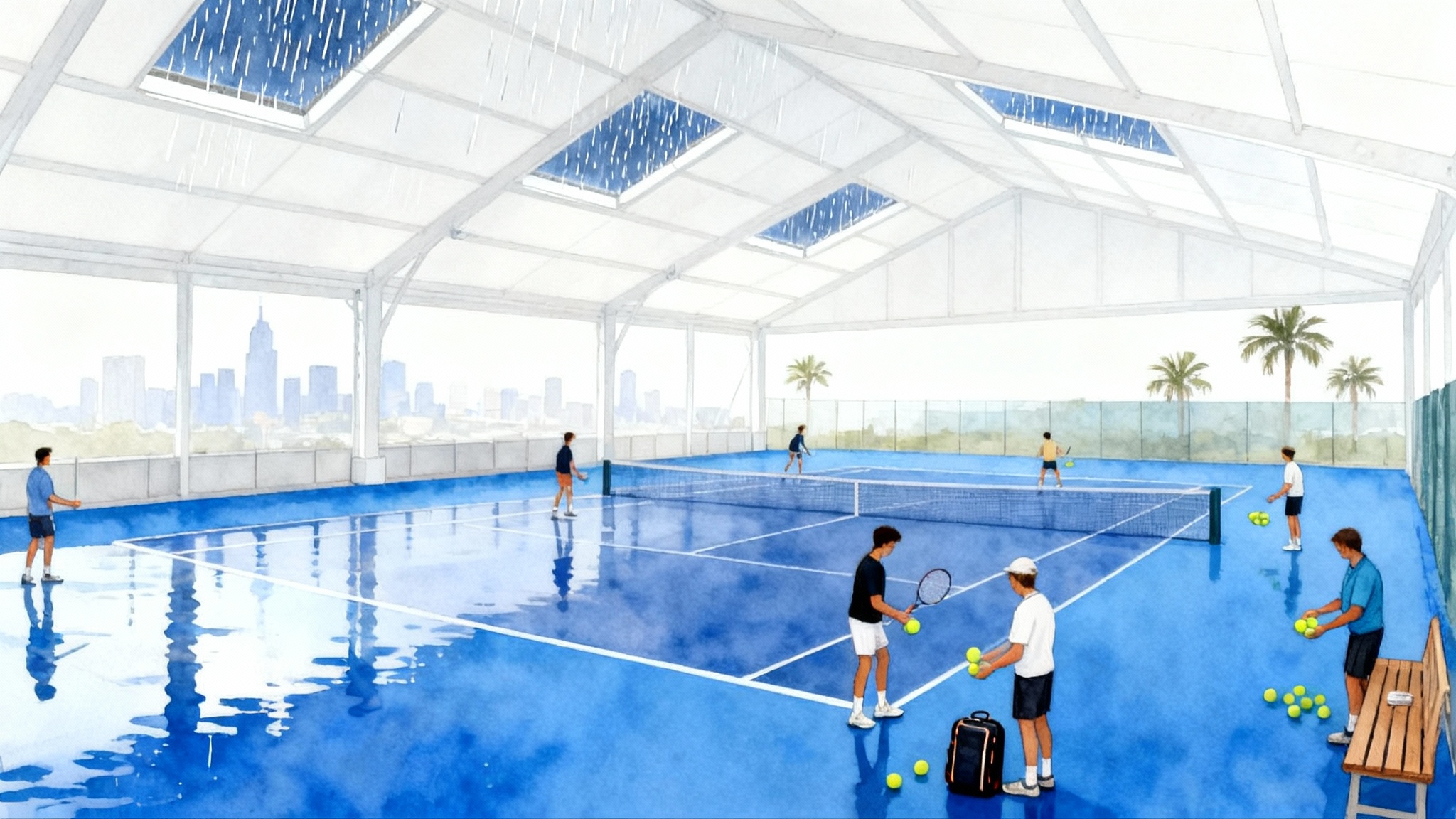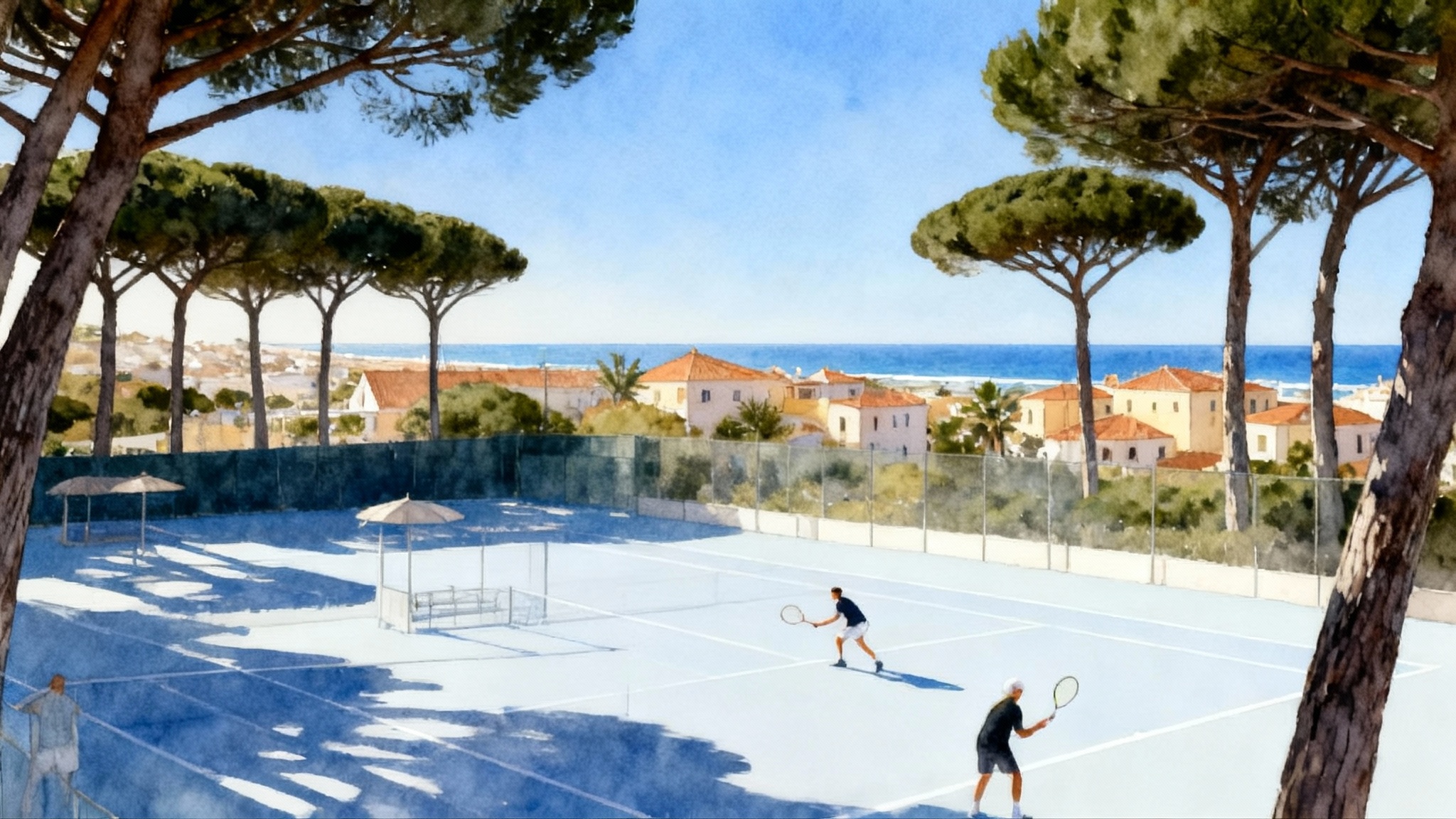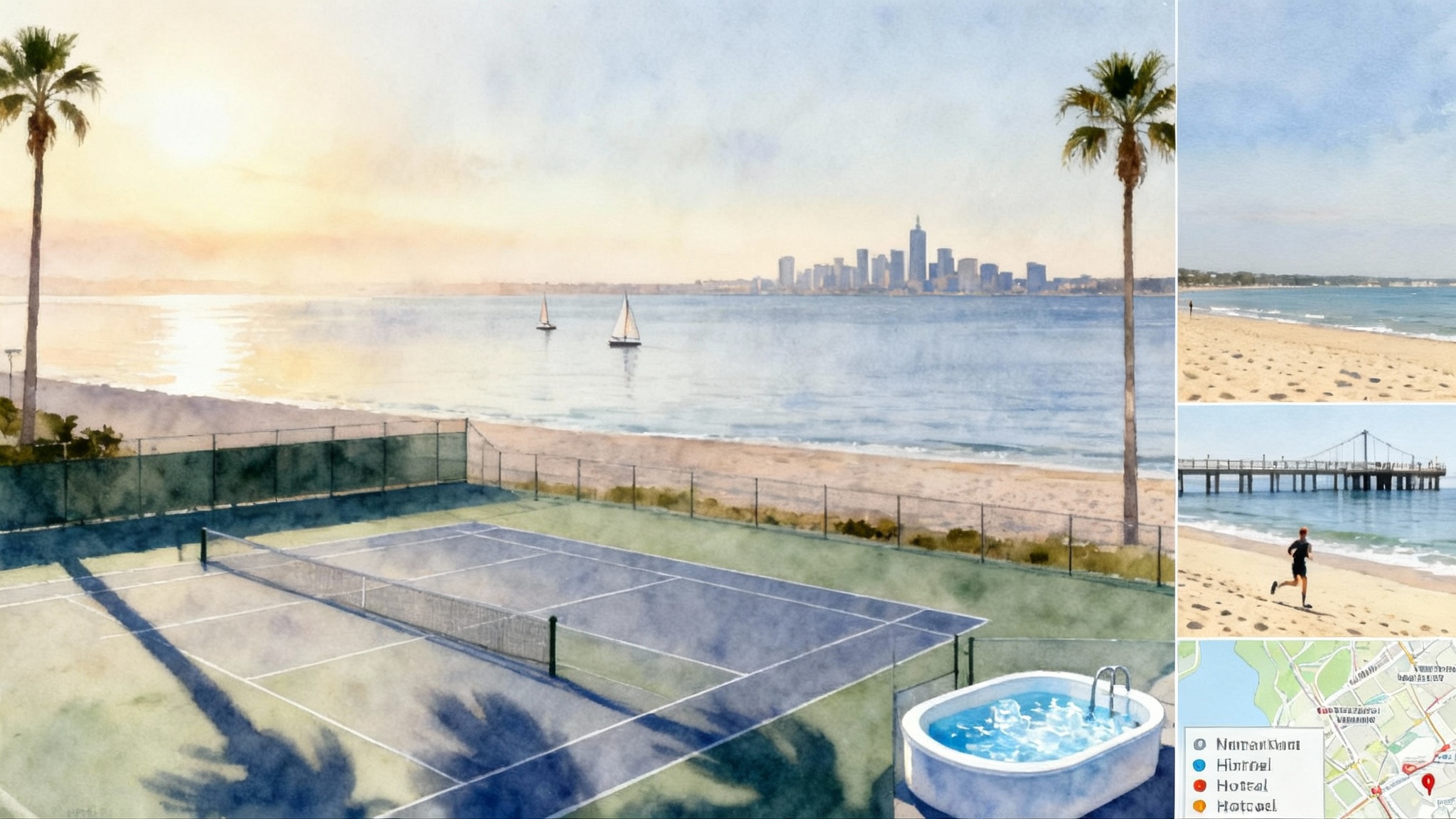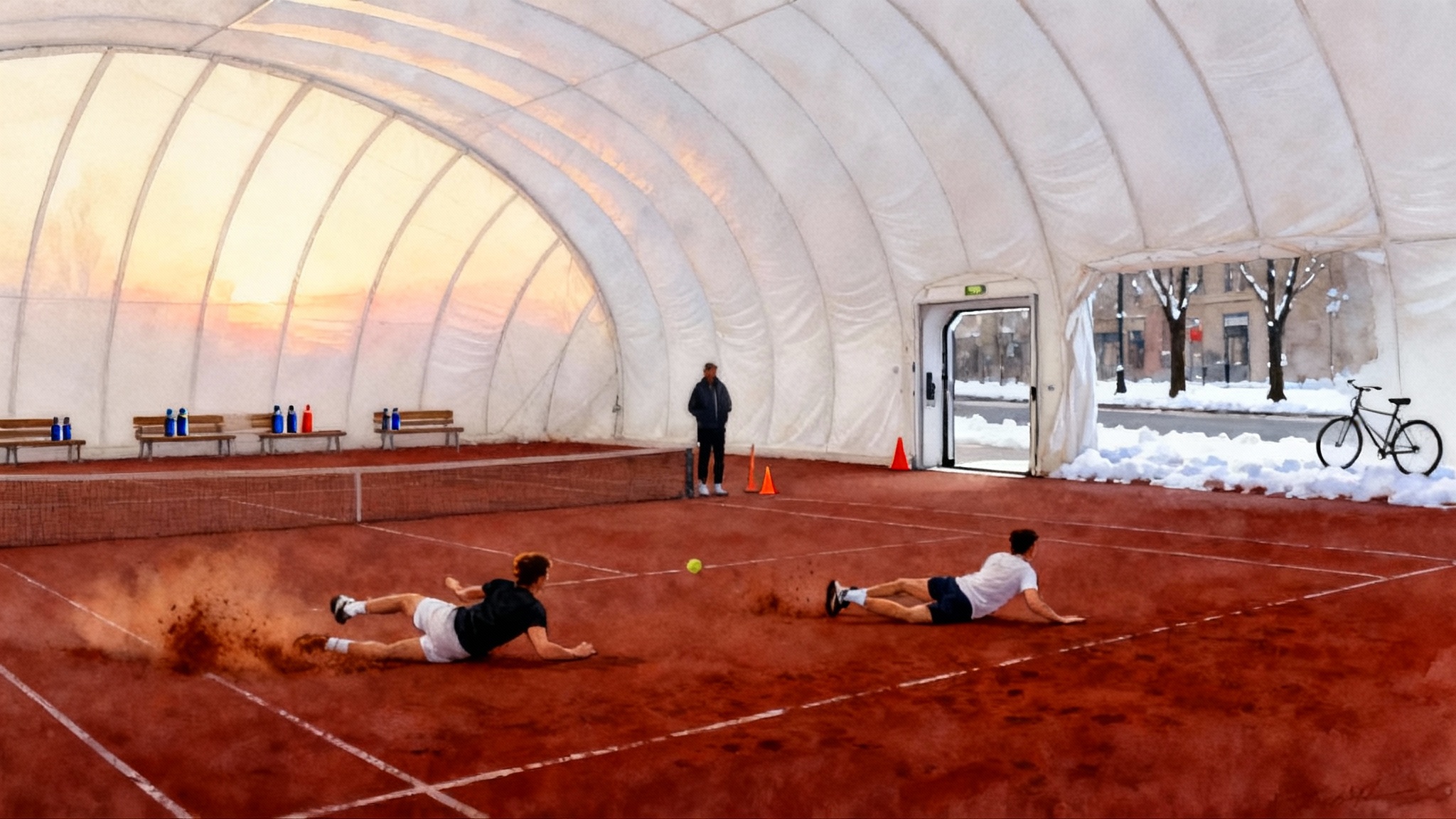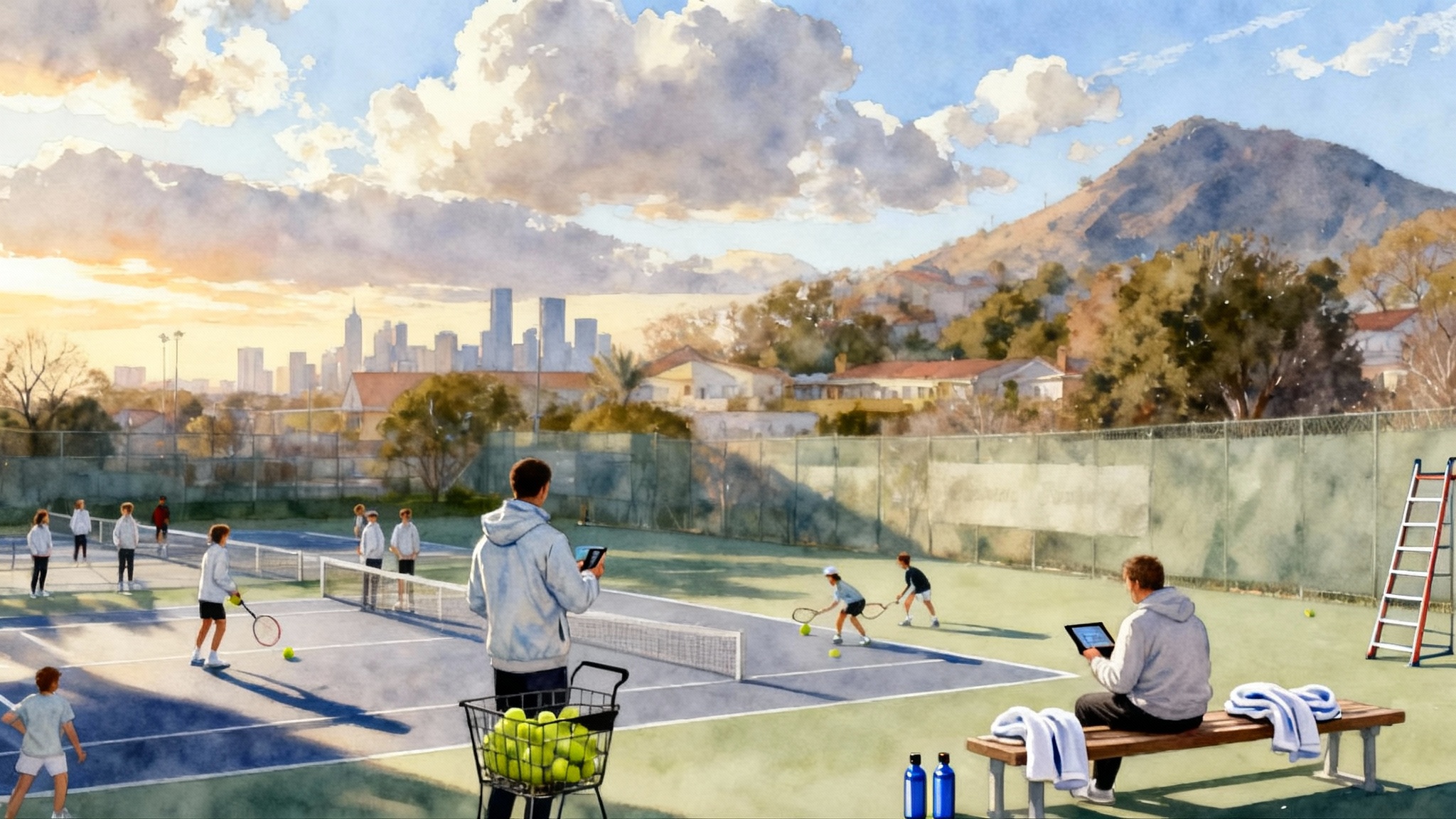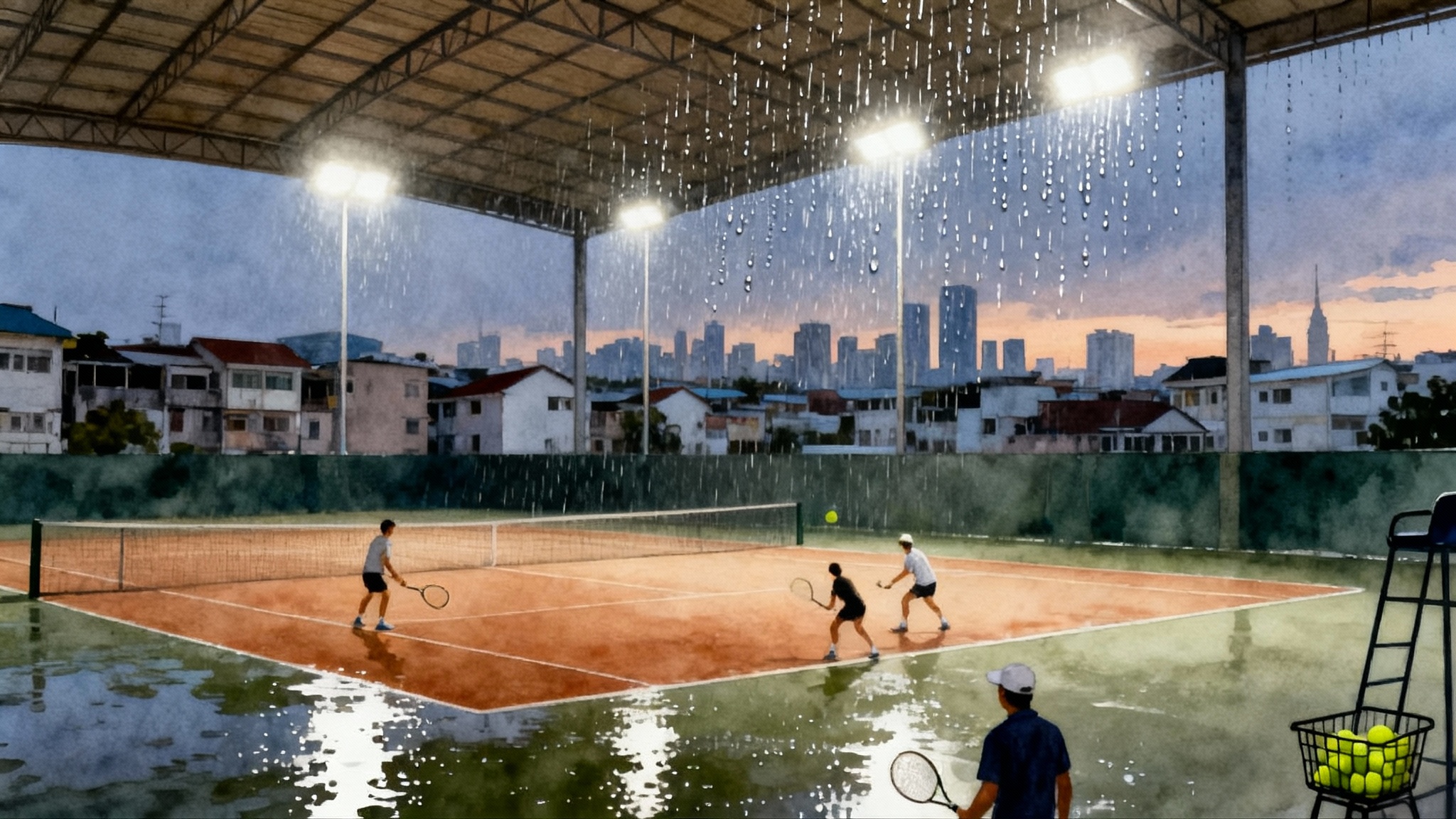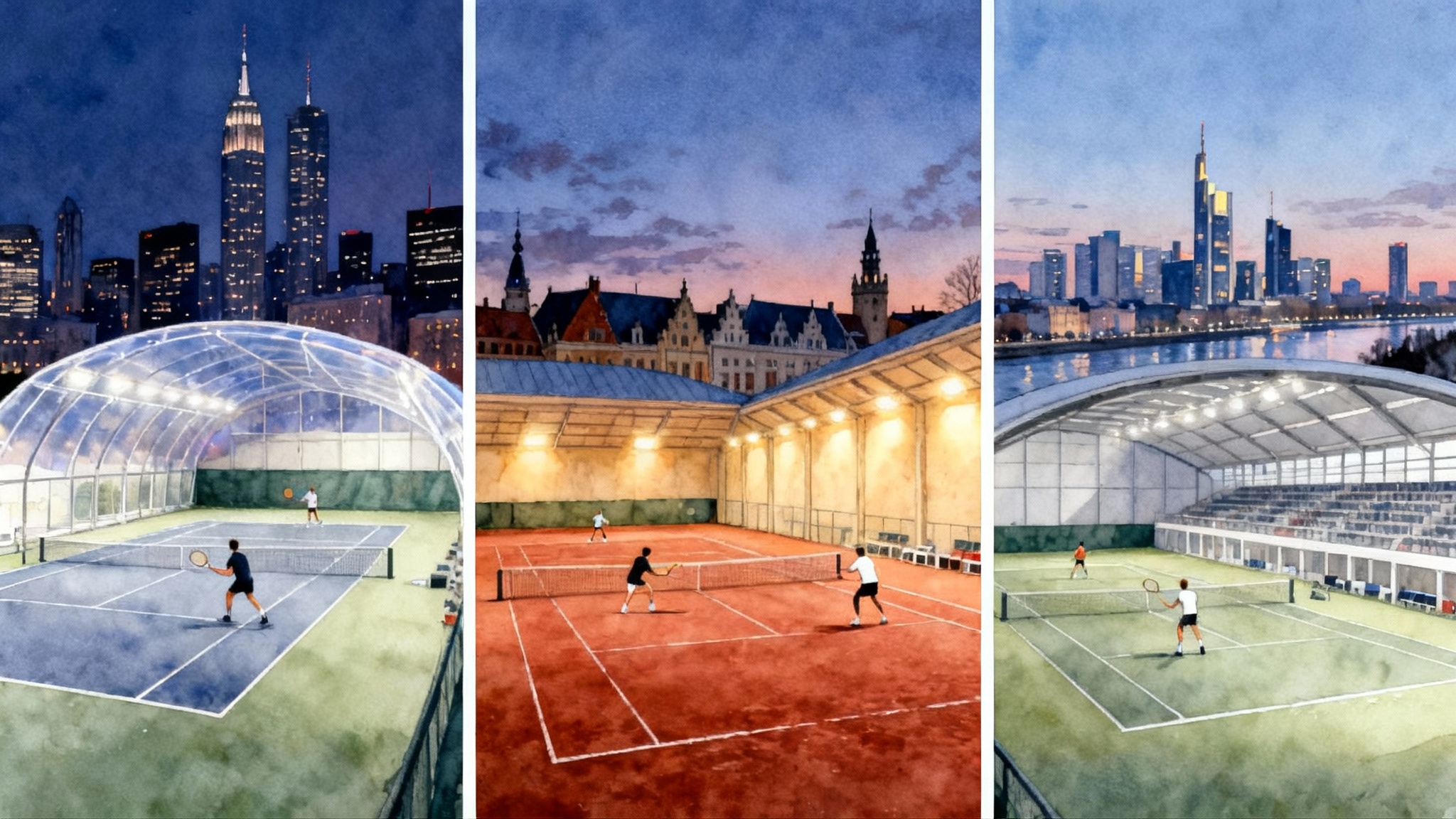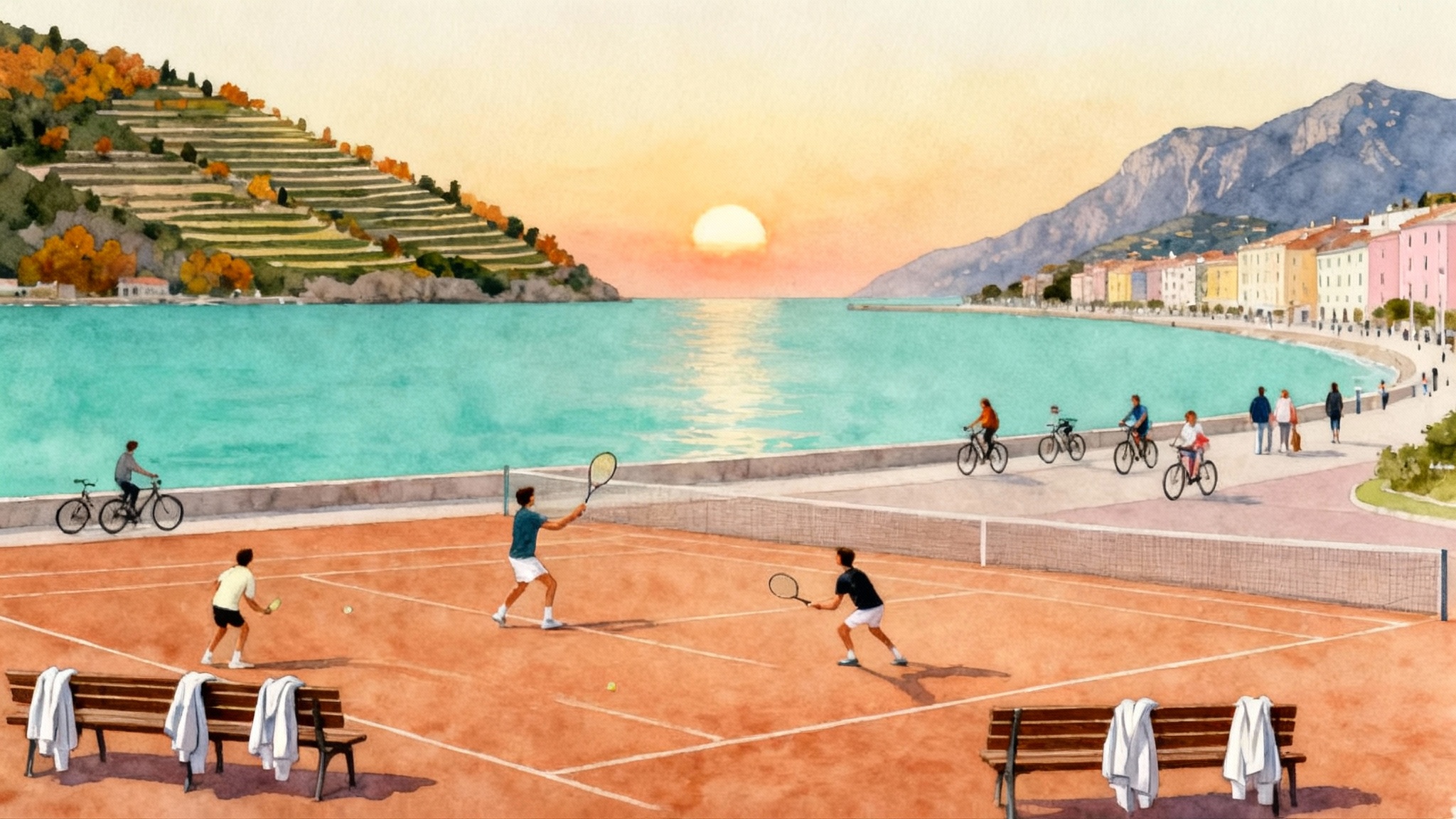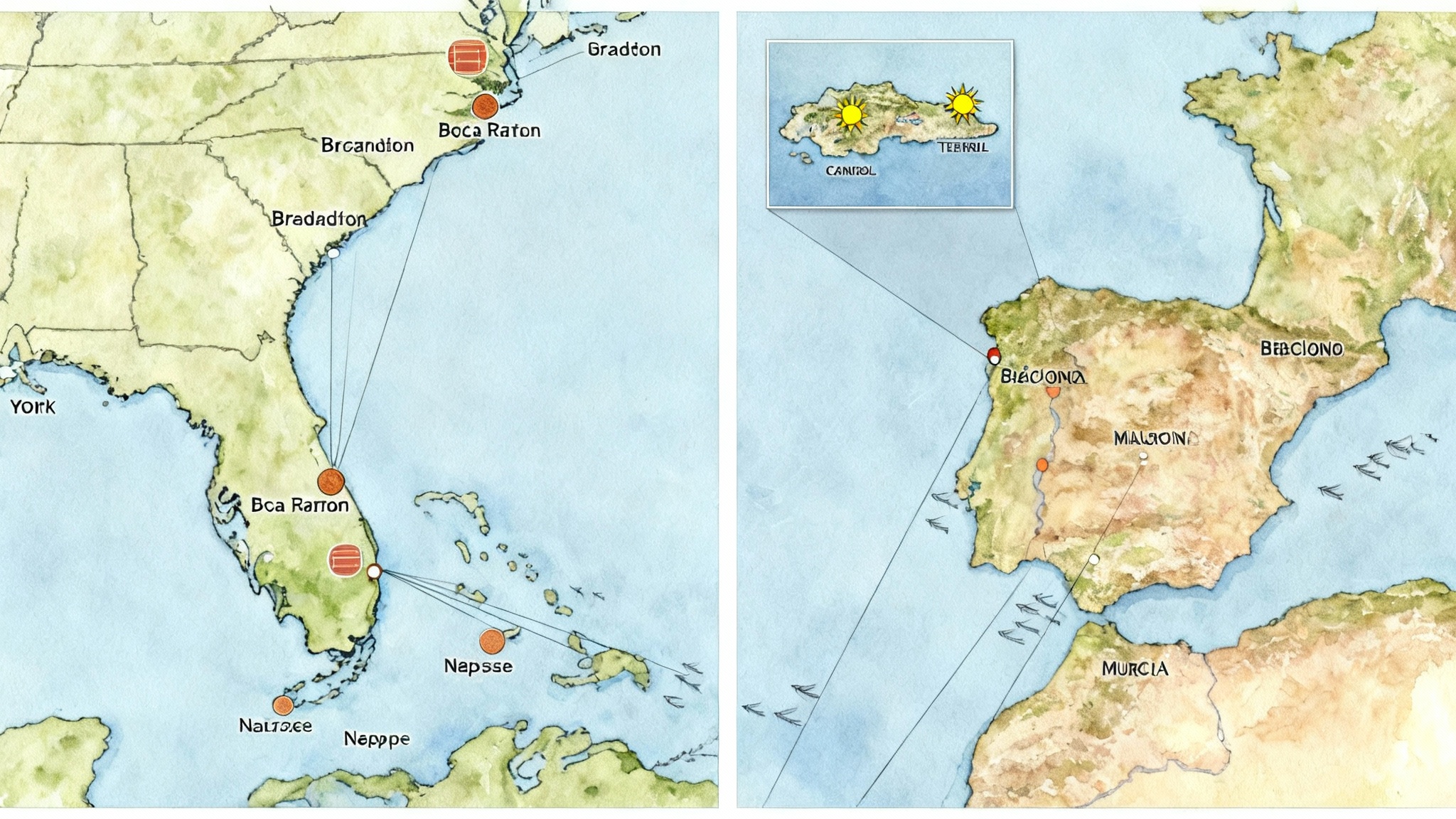Barcelona Coast Clay: 2025–26 Year-Round Training Guide
A climate-first guide to training on clay in Catalonia’s Barcelona–Maresme–Montserrat corridor. Compare bases in Cabrils, Sant Esteve Sesrovires, and Barcelona city. See microclimate months, academy spotlights, 7‑day plans, indoor backups, logistics, and budgets.
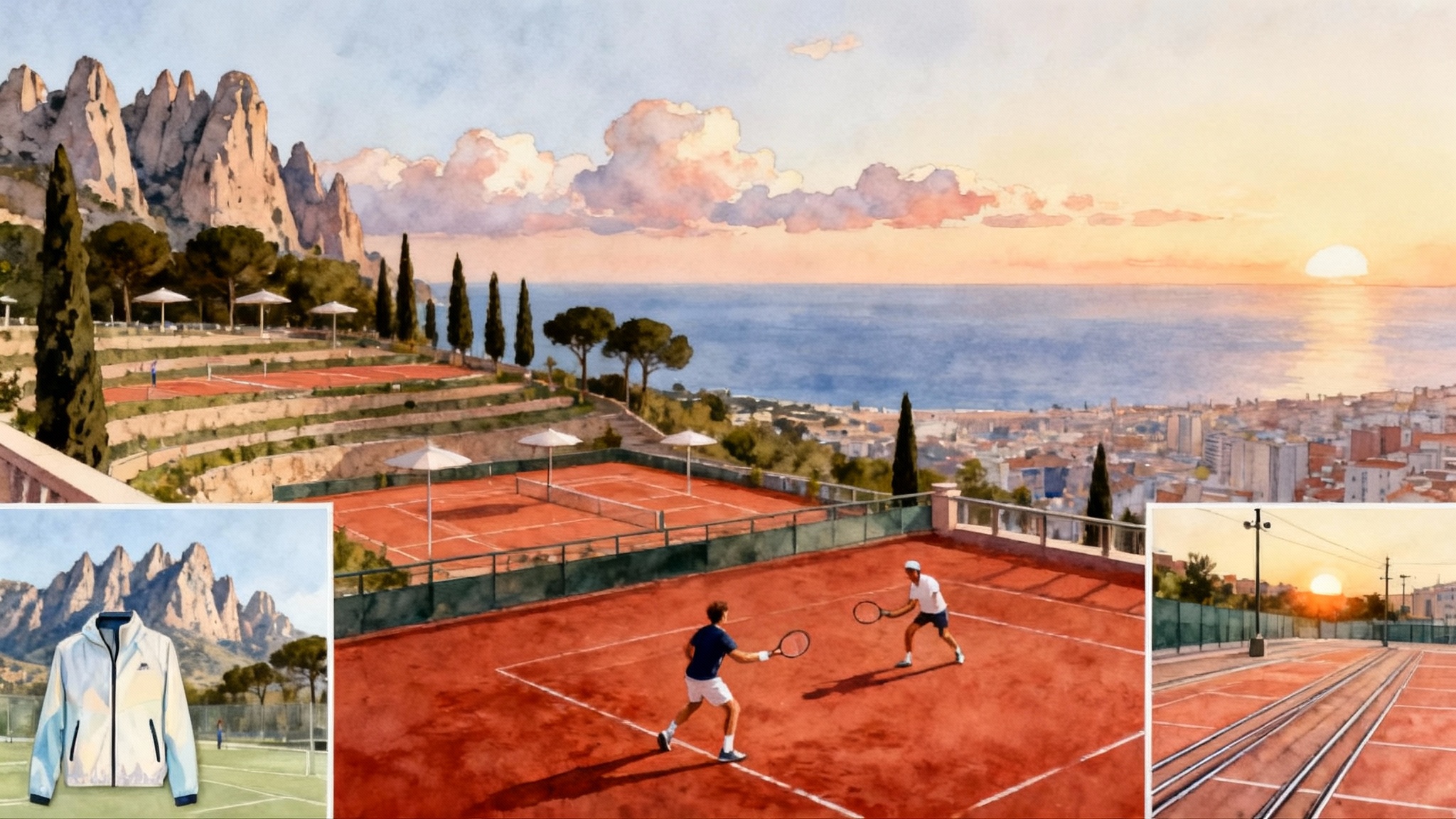
Why the Barcelona-Maresme-Montserrat corridor works for clay
If your goal is reliable outdoor clay without a long-haul to the Southern Hemisphere, Catalonia’s coastal-and-foothill belt delivers an unusual blend of mild winters, long dry spells and quick-drying surfaces. Three bases form a practical triangle within an hour of one another: Barcelona city on the coast, Cabrils in the Maresme hills just above the shoreline and Sant Esteve Sesrovires near the Montserrat foothills. All three share a Mediterranean baseline, yet each has its own microclimate that matters for day-to-day tennis.
- Barcelona city is maritime. Winter days are cool but rarely cold at midday, spring and autumn are long and comfortable and summer heat is softened by sea breezes. Monthly rainfall typically peaks in early autumn, which is why locals keep a flexible schedule in September and October. Official climate normals for the Fabra observatory show a dry summer minimum and an autumn maximum in precipitation, which is the essential pattern you will plan around. See the monthly breakdown on the Spanish State Meteorological Agency’s page: Barcelona Fabra climate normals.
- Cabrils and the Maresme ridge sit a few hundred meters above the Mediterranean, with quick drainage and regular afternoon sea-breeze circulation. Courts often dry faster here after showers than they do in the urban core. Humidity feels lower in shoulder seasons because you are slightly elevated, and mornings can be a touch cooler than downtown.
- Sant Esteve Sesrovires, on the inland side of the belt, enjoys more continental swings. Winter nights run cooler than the coast, but sunny mid-mornings in winter are excellent for training. Spring warms quickly. Autumn thunderstorms are more scattered than on the immediate coast. The trade-off is occasional north to west winds that bring crisp, drier air and keep clay playable.
Think of the corridor like three practice courts with different balls. Same sport, different bounce. Choosing the right base by month lets you live outside almost all year.
Best months by base, with wind and rain patterns
Below is a practical, on-court view rather than a lab chart. It assumes you want to maximize outdoor clay days while minimizing time lost to heavy rain or oppressive heat.
Barcelona city
- January to mid March: Playable most afternoons with light layers. Mornings can feel raw if a tramuntana or mestral pulse funnels drier air down from the Pyrenees or the Ebro valley, but those northerly winds also clear humidity and dry the clay. Aim for late morning through early afternoon.
- Late March to June: Sweet spot. Temperatures are stable, sea breezes pick up after lunch and rain is usually brief. Schedule your heaviest volume weeks here.
- July to August: Heat is real in midafternoon. Train mornings, break for recovery, then add a short evening block. City humidity can make sessions feel longer than the clock.
- September to October: Thunderstorms and easterly setups bring the year’s wettest weeks. Keep a backup indoor slot on hold and expect one to two weather-affected days each week in an active pattern.
- November to December: Cool and calm. Shorter days, but midday windows are consistently playable. Plan midday sessions when the sun angle is highest.
Wind patterns to note: a reliable afternoon sea breeze helps with recovery, while easterly “llevant” brings the soaking rains that can pause clay use. Northerly bursts feel gusty but often accelerate drying on the back end of a front.
Cabrils and the Maresme hills
- January to February: Slightly cooler mornings than the city but faster-drying surfaces after showers. Midday is excellent when sun is out.
- March to early July: Most forgiving window. You can stack volume weeks with minimal interruptions. Sea breezes ramp up predictably after lunch.
- Mid July to late August: Warm, yet the combination of elevation and circulation makes it more comfortable than downtown. Train early and late, recover midafternoon.
- September to October: Rains arrive in pulses. Because many clubs here are terraced and well drained, you often resume play sooner than in the city after a downpour.
- November to December: Crisp mornings, bright afternoons. Very steady for technical blocks.
Winds: the local “marinada” sea breeze is your friend. On showery days the hill orientation means one club may be playable while another a few kilometers away is still drying. Have a second venue in mind.
Sant Esteve Sesrovires and the Montserrat foothills
- January to March: Cool nights, sunny days. Plan sessions from late morning to midafternoon to use the warmest window.
- April to June: Prime season. Less humidity, reliable drying winds, long light. Tournament tune-ups are ideal here.
- July to August: Hot in the early afternoon. Morning-first planning is important, but evenings turn pleasant.
- September: Storm risk rises, yet showers are often brief inland. Clay bounces truer here after weather than on saturated city courts.
- October to December: Stable with cool snaps. Light layers and good to go after late mornings.
Winds: north to west flows bring clean, dry air. Gusts can affect ball toss, so practice serve routines in mild crosswinds.
Where to train: two academies to know
There are dozens of quality clubs across Catalonia. For this corridor, two programs match the climate-first approach and the three-base model.
-
MBA Tennis Academy Cabrils. Located inside the long-standing Club Tennis Cabrils in the Maresme region, MBA builds its daily rhythm around the sea-breeze window. The club’s seven red clay courts and on-site gym streamline mixed days of drilling and strength work. Because the site sits above the coast, surfaces dry quickly after showers. Parents who want an easy routine can base in Cabrils or the neighboring seaside towns and add beach recovery walks to the plan.
-
Catalunya Tennis Academy program. Led by coach Félix Riba, CTA runs competition programs with a strong emphasis on mental routines and match habits. The academy trains at city and Vallès sites and has access to indoor training blocks through the Centre d’Alt Rendiment in Sant Cugat for the under eighteen program, which is useful in the autumn peak-rain weeks. Adults often train at city clubs such as Vall Parc. The spread across urban and inland venues lets you pivot with the weather.
Neither of these choices is the only good option. They are examples of how to combine location, microclimate and facilities to keep you outside more days per year. For broader context on climate-first planning, compare our Algarve winter tennis guide.
Tournament hubs and how to use them
Catalonia’s spring is a clay festival. The Barcelona Open at Real Club de Tenis Barcelona anchors mid April. Two weeks around that event create an ecosystem of national and international tournaments at nearby clubs, plus junior and seniors draws. For a second marker, the Catalonia Open WTA 125 in Vic runs in late April to early May and sits just an hour inland, making it a great scouting or inspiration day trip if your training block overlaps. Check the official tournament site for dates and any community events attached to the week: Catalonia Open WTA 125 Vic 2025.
How to use the calendar:
- Adults: Aim your intensive week to overlap with a professional event. Watch a half day, note patterns from the practice courts, then apply ideas in your evening session.
- Juniors: Play a local open or regional event while you train. Spain’s club network schedules frequent weekend draws. Your academy can handle entries and transport.
- Coaches traveling with players: Build a two-week ladder. Week one in Maresme for volume, week two inland before a competitive weekend. The small climate shifts sharpen adaptation skills.
Sample 7-day plans
These are templates that assume you are in a mixed training-tournament month like April, May or October. Adjust for summer heat by shifting sessions earlier and adding a longer midafternoon recovery window.
Junior performance week
- Day 1 Sunday: Arrival and orientation. Evening 60-minute mobility and band work. Early lights out.
- Day 2 Monday: 09:00–11:30 technical footwork and patterns on clay. 12:00 nutrition brief. 16:30–18:00 points-based drills with constraints such as second-serve first rallies or one-pattern points. 30 minutes of serve targets.
- Day 3 Tuesday: 09:30–11:00 high-volume rally tolerance with depth gates. 11:15–12:00 return plus first ball patterns. 17:00–18:30 match play set with debrief. 20 minutes of contrast recovery and journaling.
- Day 4 Wednesday: 10:00–12:00 heavy serve and forehand day, short-balls and inside-out patterns. 16:30 hike or bike in the Maresme hills or Montserrat trails for aerobic capacity. Evening video review of 12–15 key points from match day.
- Day 5 Thursday: 09:30–11:30 transition and net play with approach plus first volley scoring. 17:00–18:30 pressure games with score ladders. Ten-minute visualization session.
- Day 6 Friday: 10:00–11:00 tactical rehearsal for weekend matches. 11:15–12:00 returns and breakers. Afternoon off-feet recovery. Early dinner.
- Day 7 Saturday: Tournament matches or two-set in-house competition. Post-match structured reflection with three things kept, one change, one cue for tomorrow.
Coaching detail to copy: Always assign a wind-side task. For example, on the upwind baseline, focus on taking the ball earlier on the backhand. On the downwind baseline, build a heavier, higher crosscourt and step in on anything short. This makes weather an ally rather than a variable.
Adult player week
- Day 1 Sunday: Check-in and racquet tune. Book a 90-minute guided hit to calibrate height, spin and balance on clay.
- Day 2 Monday: 08:30–10:00 clay movement and error management. 17:30–19:00 live-ball forehand plus recovery steps. Light gym.
- Day 3 Tuesday: 08:30–10:00 serve plus first ball patterns. 18:00–19:30 coached match set. Ten-minute notes over dinner on patterns that paid off.
- Day 4 Wednesday: 09:00–10:30 backhand plus depth control. Afternoon culture break in Barcelona or a coastal walk in Maresme. Evening 45-minute mobility session.
- Day 5 Thursday: 08:30–10:30 approach and finishing. 18:00–19:00 serve targets and breaker practice.
- Day 6 Friday: 09:00–10:00 light hit. Midday stringing and footwork refresher. Evening social doubles.
- Day 7 Saturday: Play a local match or ladder two sets with a stronger academy player. Celebrate with a Montserrat hike or a Barcelona neighborhood food tour.
Indoor and wet-weather backups
- Barcelona city: Large multi-court clubs maintain some covered or all-weather courts. Booking as a non-member is not always straightforward, so let your academy arrange the slots. Adults training with Catalunya Tennis Academy often add a covered session at Vallès clubs on rainy afternoons.
- Vallès and Sant Cugat: The Centre d’Alt Rendiment has indoor capacity that under eighteen athletes can access through programs. If you are not part of an academy that partners with the center, plan to drive to a nearby covered facility instead when the forecast turns.
- Maresme and Cabrils: Many clubs have at least one quick-drying court or a canopy. The elevation and drainage help, but for October you should still hold a provisional indoor hour two or three times per week to protect volume.
Practical tip: create a weekly weather hedge. Reserve a cancellable indoor hour on your probable wet afternoon. If skies clear, cancel by the club’s cutoff. If not, you keep your training volume.
Lodging and transport logistics
Pick your base first, then decide whether you want car-first or rail-first movement. With a family or a tournament-heavy plan, a compact rental car saves time. Solo travelers who value city culture can go rail-first and add short taxi hops.
- Cabrils base: Stay in Cabrils or neighboring villages like Vilassar de Dalt, Argentona or coastal Vilassar de Mar. Expect 110 to 200 euros per night for clean, well-located apartments in shoulder months, rising in July and August. From Barcelona El Prat Airport, drive 40 minutes via the C-32 or take the coastal commuter line to Vilassar de Mar then a ten-minute taxi uphill.
- Sant Esteve Sesrovires base: Hotels and guesthouses serve the golf course area and the industrial belt near Martorell. Rates run 85 to 150 euros per night outside peak fairs. Driving time from the airport is 35 to 45 minutes via the A-2 or AP-7. The regional rail service Ferrocarrils de la Generalitat de Catalunya reaches the area, but most players use a car to move between clubs and accommodations.
- Barcelona city base: Choose Eixample, Gràcia or Sarrià to be near clubs and still enjoy food and culture. Apartments and boutique hotels span 130 to 260 euros per night for quality stays outside peak holidays. A taxi from the airport takes 25 to 35 minutes depending on traffic. The metro and commuter rail network is dense and reliable.
Food and day-to-day: Supermarkets and neighborhood markets make self-catering easy. Assume 25 to 40 euros per person per day for groceries and casual meals if you cook some nights, more if you eat out twice daily in the city center.
Realistic budgets for a one-week block
Prices vary by season, group size and whether you book packages, but the following ranges match the corridor in 2025.
- Coaching and court time:
- Small-group adult or junior intensive: 350 to 700 euros per person for five mornings or afternoons.
- Private lessons with senior coach: 50 to 100 euros per hour.
- Court hire outside academy packages: 12 to 30 euros per hour on clay, often limited for non-members in Barcelona city.
- Strength and physio:
- Gym drop-in or weekly pass: 20 to 50 euros.
- Physiotherapy session: 45 to 70 euros per forty-five minutes.
- Accommodation:
- Cabrils and Maresme: 110 to 200 euros per night for a two to four person apartment.
- Sant Esteve Sesrovires area: 85 to 150 euros per night for a business hotel or guesthouse.
- Barcelona city: 130 to 260 euros per night for mid-range hotels or modern apartments in central neighborhoods.
- Transport:
- Compact rental car: 30 to 60 euros per day outside August, plus tolls on the C-32 and fuel.
- Train and local taxis: 7 to 15 euros per person per day if you base in the city and travel light.
For US readers who want a quick currency sense: as of October 2025, one euro has hovered roughly near one US dollar. For planning, treat euro figures as approximately equal dollars, then confirm your card’s live rate before booking.
How to choose your base for a given month
- February to March: Cabrils or Barcelona city. You get sunny midday windows and reliable sea breezes. Book a backup indoor hour on likely wet days.
- April to early June: Any of the three. For a tournament plus training combo, split your week between Barcelona city and Sant Esteve Sesrovires to sample different bounces and wind.
- July to August: Cabrils for heat relief via elevation and breeze. If you base in the city, get serious about early sessions and evening sets.
- September to October: Sant Esteve Sesrovires holds up well in showery periods. If you must be city based, line up covered courts through your academy.
- November to December: City or Maresme for light and convenience. Inland can be crisp in mornings, excellent by late morning.
Putting it all together: two model weeks
- Junior aiming at national events: Base in Maresme for week one to build volume on fast-drying hills. Move inland for week two to polish point construction in drier air. Enter a weekend tournament arranged by your academy. Keep one indoor session reserved in case an easterly rain event arrives.
- Adult returner building a clay foundation: Stay in Eixample or Gràcia. Train mornings Monday to Friday, add one evening set on Tuesday and Thursday. Take a Wednesday cultural half day to protect your legs. Do a Saturday set at a second club to learn a new bounce.
The bottom line
Year-round clay in Catalonia is not a myth. It is a scheduling habit applied to a short stretch of coast and foothills that tilts the odds in your favor. Pick the base that matches the month, attach yourself to an academy that can pivot between outdoor and covered options when needed and build a week that treats wind, rain and light as training variables rather than obstacles. Do that, and the Barcelona-Maresme-Montserrat corridor becomes your most dependable European clay classroom.
